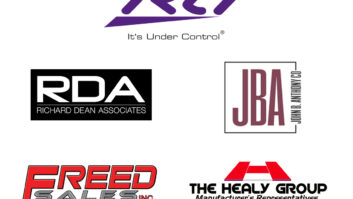NEW YORK – The future is generally bright for consumer electronics retailing in the near term, as well as the next several years, according to a panel of industry execs assembled by Monster for a CE Line Shows session titled “How To Win The Holidays.”
But there are going to be bumps along the way unless retailers improve the buying experience for consumers.
CEA president/CEO Gary Shapiro reminded a room full of retailers and analysts that the overall economy is first and foremost on consumers’ minds. “Buried in the positive overall news for 2013 is the simple fact there’s only three growth categories: headphones, smartphones and tablets. You take those out, we’re actually in negative growth.”
Having said that, Shapiro identified opportunities ahead. “Ultra HD is already out there. If you think about the ecosystem, it’s just not the TV set. You have camcorders, you have serving devices. At some point you’re going to have prerecorded software again — you have players. You have a range of things to connect those products. Beginning in the fourth quarter, but really more in 2014, 2015 especially, we’re about to enter a great range.
And Shapiro added, “Another thing that I think is really going to be positive is high-performance audio products. Recent CEA research shows almost half of American consumers are willing to pay for better sound. I think there’s a right moment where the music industry and electronics industry is gathered and will start talking about these things in a more organized way. I’m pretty excited about that.”
Former Best Buy president Mike Vitelli concurred with Shapiro’s overall assessment, but, he added, retailers and manufacturers need to step up their technological game in the long term.
“Companies need to consider that they’re now reaching consumers first via their smartphones. When I’m looking for a restaurant, a store, a service, whatever it might be, if I can’t find it [on my phone], it doesn’t exist. They could be the most fabulous entity in the world. I think our industry needs to do a better job of that.”
Vitelli continued, “There was just a survey where most consumers are dissatisfied with the mobile shopping and mobile exploring experience. That’s not because they don’t want to do it. I believe it’s because the experience that they’re getting is poor.”
Vitelli also stressed the importance of attachment sales to the retail experience. “I went and bought a bicycle and the store had every single bike displayed with five essential accessories — a water bottle, a water bottle holder, a bike computer, a little tool bag and an emergency flashing light. Five items, $100, yours for only $84 and it was on every single bike. So I bought it and the gentleman asked me if I wanted the bike computer that actually had a heart-rate monitor on it. I said that would be great and he goes, ‘That’s an extra $20.’ There’s a lesson in that.”
“I think being able to see the ensemble of a tablet, a television with all the things that go with it, a phone with all the things that go with it can make a big difference to the final sale. Even some of the iconic retailers that everybody talks about that have products that everybody wants, their product is displayed by itself. I think the opportunity for retailers to show the ensemble is important.”
BrandSmart USA president Michael Perlman agreed with Vitelli’s view on add-on sales and added that up-selling is equally vital and, thus, a well-trained sales staff is a necessity.
“As the profits have come down on the hard merchandise, the accessories are not only mandatory for us. We’re making a mistake if we don’t sell them. If you don’t sell a case with a phone, they’re going to walk in to a competitor who’s local and buy the case after they’ve bought the phone from you. They’re going to buy an AC adapter later from RadioShack if you didn’t sell it to them upfront. Basically, what we do is we actually track each category by salesman, by store, by pack, by department, and we look for number of attachments.”
In addition, Perlman continued, “we made it so that every customer who comes in for a television above a certain price point has to be shown 4K first. It’s the old Sears model. We’ll show somebody a $2,000 washer and they’re happy to buy the $700 one, which is a lot easier than selling up from a $200 one. [Ultra HD] is absolutely great technology, but it has to be shown. In person, it’s a flawless piece of technology.”
Perlman also expressed optimism that the days of discounters and mass merchants stealing CE sales is about to ebb. “The appliances are becoming connected, every device in the house, the security systems are going to all work off the one Wi-Fi system, which means that you can’t really do it with [commodity products]. It’s going to be that kind of complicated. People are going to need people who come to people’s homes and can handle the accessories, the installations, the hookup, and ‘Oh my God I just erased the app off my phone, what do I do?’ Our business is about to shift back,” he concluded.













